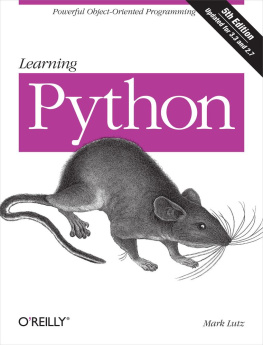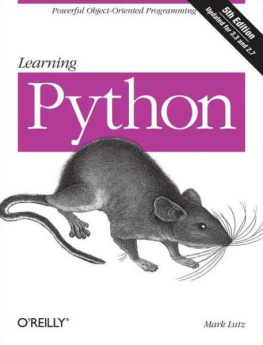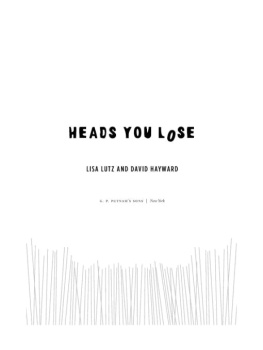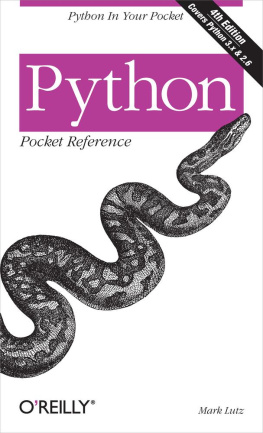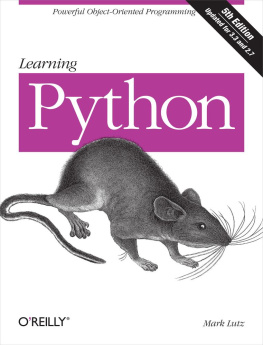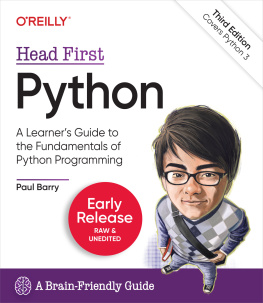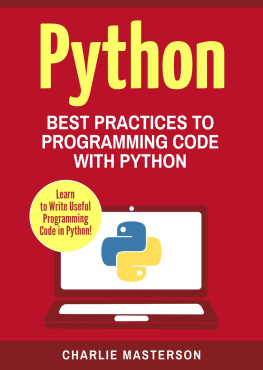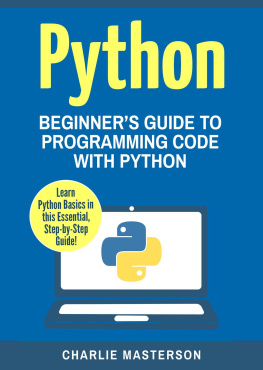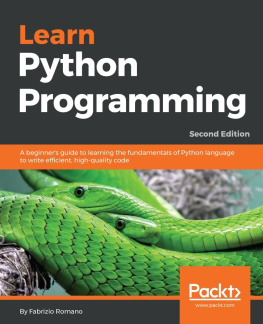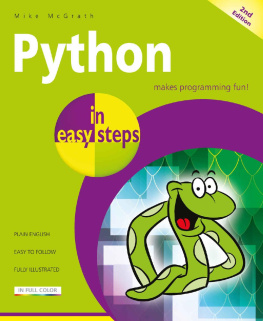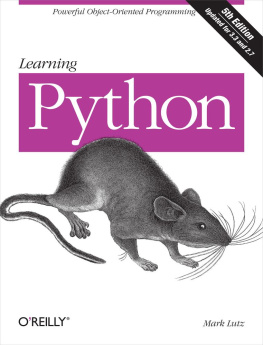Lutz - Learning Python, 5th Edition
Here you can read online Lutz - Learning Python, 5th Edition full text of the book (entire story) in english for free. Download pdf and epub, get meaning, cover and reviews about this ebook. year: 2013, publisher: OReilly Media, genre: Home and family. Description of the work, (preface) as well as reviews are available. Best literature library LitArk.com created for fans of good reading and offers a wide selection of genres:
Romance novel
Science fiction
Adventure
Detective
Science
History
Home and family
Prose
Art
Politics
Computer
Non-fiction
Religion
Business
Children
Humor
Choose a favorite category and find really read worthwhile books. Enjoy immersion in the world of imagination, feel the emotions of the characters or learn something new for yourself, make an fascinating discovery.
- Book:Learning Python, 5th Edition
- Author:
- Publisher:OReilly Media
- Genre:
- Year:2013
- Rating:5 / 5
- Favourites:Add to favourites
- Your mark:
Learning Python, 5th Edition: summary, description and annotation
We offer to read an annotation, description, summary or preface (depends on what the author of the book "Learning Python, 5th Edition" wrote himself). If you haven't found the necessary information about the book — write in the comments, we will try to find it.
Get a comprehensive, in-depth introduction to the core Python language with this hands-on book. Based on author Mark Lutzs popular training course, this updated fifth edition will help you quickly write efficient, high-quality code with Python. Its an ideal way to begin, whether youre new to programming or a professional developer versed in other languages.
Complete with quizzes, exercises, and helpful illustrations, this easy-to-follow, self-paced tutorial gets you started with both Python 2.7 and 3.3 the latest releases in the 3.X and 2.X linesplus all other releases in common use today. Youll also learn some advanced language features that recently have become more common in Python code.
- Explore Pythons major built-in object types such as numbers, lists, and dictionaries
- Create and process objects with Python statements, and learn Pythons general syntax model
- Use functions to avoid code redundancy and package code for reuse
- Organize statements, functions, and other tools into larger components with modules
- Dive into classes: Pythons object-oriented programming tool for structuring code
- Write large programs with Pythons exception-handling model and development tools
- Learn advanced Python tools, including decorators, descriptors, metaclasses, and Unicode processing
Lutz: author's other books
Who wrote Learning Python, 5th Edition? Find out the surname, the name of the author of the book and a list of all author's works by series.

